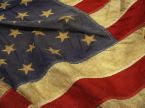http://www.webofdebt.com/articles/imf.php
“A year ago,” said law professor Ross Buckley on Australia’s ABC News last week, “nobody wanted to know the International Monetary Fund. Now it’s the organiser for the international stimulus package which has been sold as a stimulus package for poor countries.”
The IMF may have catapulted to a more exalted status than that. According to Jim Rickards, director of market intelligence for scientific consulting firm Omnis, the unannounced purpose of last week’s G20 Summit in Pittsburgh was that “the IMF is being anointed as the global central bank.” In a CNBC interview on September 25, Rickards said, “They’ve issued debt for the first time in history. They’re issuing SDRs. The last SDRs came out around 1980 or ’81, $30 billion. Now they’re issuing $300 billion. When I say issuing, it’s printing money; there’s nothing behind these SDRs.”
SDRs, or Special Drawing Rights, are a synthetic currency originally created by the IMF to replace gold and silver in large international transactions. But they have been little used until now. Why does the world suddenly need a new global fiat currency and global central bank? Rickards says it because of “Triffin’s Dilemma,” a problem first noted by economist Robert Triffin in the 1960s. When the world went off the gold standard, a reserve currency had to be provided by some large-currency country to service global trade. But leaving its currency out there for international purposes meant that the country would have to continually run large deficits, and that meant it would eventually go broke. The U.S. has fueled the world economy for the last 50 years, but now it is going broke. The U.S. can settle its debts and get its own house in order, but that would cause world trade to contract. A substitute global reserve currency is needed to fuel the global economy while the U.S. solves its debt problems, and that new currency is to be the IMF’s SDRs.
That’s the solution to Triffin’s dilemma, says Rickards, but it leaves the U.S. in a vulnerable position. If we face a war or other global catastrophe, we no longer have the privilege of printing money. The dollar becomes just another currency. To avoid that, the Federal Reserve is hinting that it is prepared to raise interest rates, even though that would mean further squeezing the real estate market and the real economy. Rickards was referring to an oped piece by Fed governor Kevin Warsh, published in The Wall Street Journal the same day the G20 met. Warsh said that the Fed would need to raise interest rates if asset prices rose – which Rickards interprets to mean gold, the traditional go-to investment of investors fleeing the dollar. “Central banks hate gold because it limits their ability to print money,” said Rickards. If gold were to suddenly go to $1,500 an ounce, it would mean the dollar was collapsing. Warsh was giving the market a heads up that the Fed wasn’t going to let that happen. The Fed would raise interest rates to attract dollars back into the country. “Warsh is saying, ‘We sort of have to trash the dollar, but we’re going to do it gradually,’” Rickards observed. “Warsh is trying to preempt an unstable decline in the dollar. What they want, of course, is a stable, steady decline.”
What about the Fed’s traditional role of maintaining price stability? It’s nonsense, said Rickards. “What they do is inflate the dollar to prop up the banks.” The dollar has to be inflated because there is more debt outstanding than money to pay it with. The government currently has contingent liabilities of $60 trillion. “There’s no feasible combination of growth and taxes that can fund that liability,” Rickards said. The government could fund about half that in the next 14 years, which means the dollar needs to be devalued by half in that time.
Subscribe to:
Post Comments (Atom)













No comments:
Post a Comment